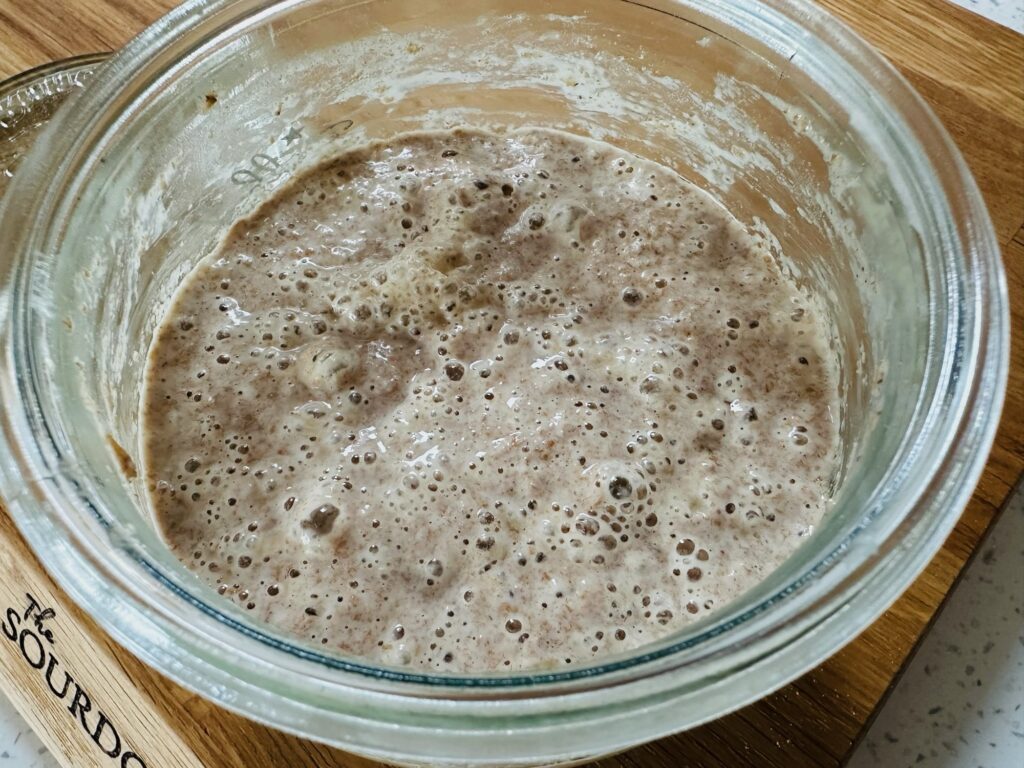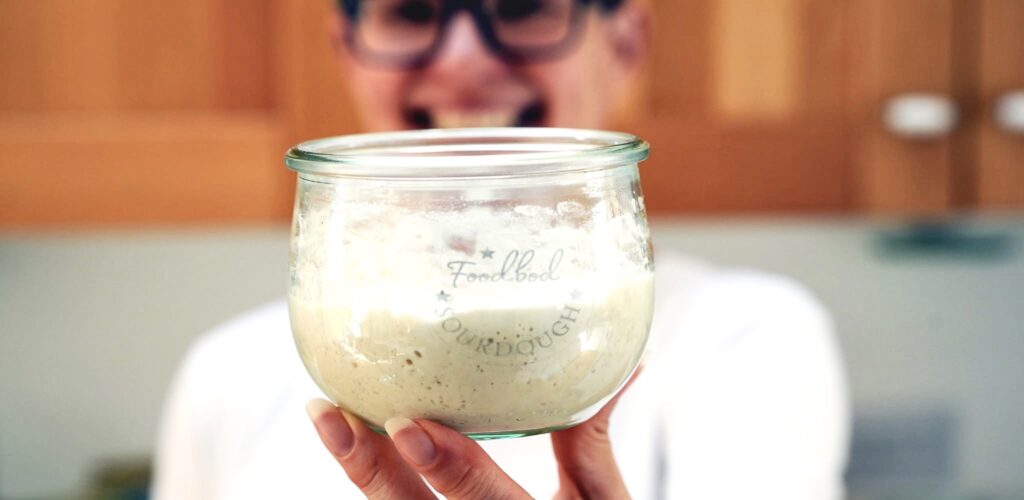
This is a copy of a post I added to my Facebook page that I am copying here because I want it logged on my website too…
This autumn and into winter, I have seen a real trend for overheating starters, and consequently many poor starters are over fermenting, and getting thin and hungry as a result from being too warm for too long.
The fact is: A thin starter is a weak starter and will not lift a dough. And by putting starters in so much warmth for so long that’s what will happen.
So please pass this onto anyone you think it might help:
First and fore mostly, please tell anyone that you see doing do so, to stop putting their starters in warm places, places like ovens with pilot lights on/the top of the fridge/the airing cupboard/near the stove/by your Aga/or by wood burners, for hours on end, and days and nights at a time. It’s much too warm for much too long. The starter will ferment like mad and get thin and weak as a result.
I understand that people worry when it gets cold, but I’ve just made 14 brand new starters in my kitchen over the last week, including the one above, and they all just sat on my kitchen counter, at whatever the temperatures happened to be, which happened to be between 13C – 19C that week, and did their thing very happily. I didn’t put them anywhere special, or anywhere warm, just on my kitchen counter.
The fact is: They really do not need to be coddled so much.
A little bit of warmth is fine, but mostly your kitchen counter, or some part of your kitchen, is ideal. You don’t need special gadgets or anything else just your kitchen counter.
I understand that people worry about starters, especially new ones, but they really are far more resilient than people think, just give them a chance to do their thing…yes, some need tweaks along the way, but they don’t need to be cooked.
These are the facts:
If your starter is growing quickly, getting almost frothy, it’s too warm.
If it’s got a layer of dark liquid on the top, it’s too warm.
If it’s got a flat surface with teeny tiny bubbles it’s become thin from being too warm.
If it smells very strongly of acetone, or just very strongly at all, it’s too warm.
These scenarios can all be fixed by feeding your starter less water than flour, making it nice and thick again, then continuing on with the process, on the counter.
Follow the process, follow my tips, and it will be fab!

